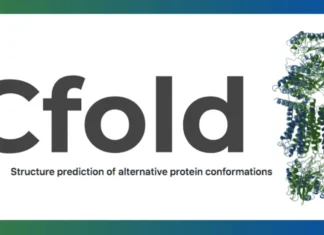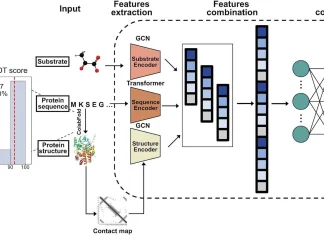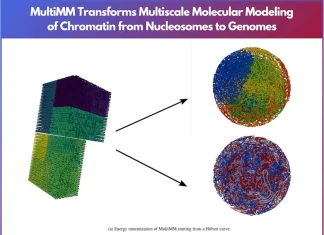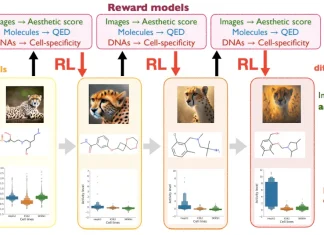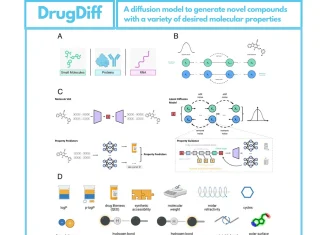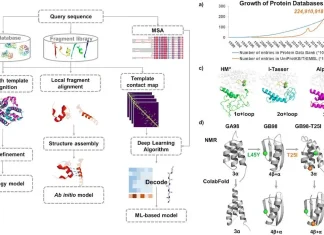Shaping the Future of Enzyme Catalysis: Advances in the Computational Design...
Enzymes can mediate discrete chemical reactions with sub-angstrom precision by employing complex, polar active sites to ensure a precise and effective response. Using the...
How Scripps Research Is Pioneering New Approaches to Slow Cancer Growth
To fight cancer, we must stop their metastasis or uncontrolled multiplication. Hence, it is important to understand what proteins these cancer cells need for...
Are We Closer to Mapping the Full Conformational Landscape of Proteins?
Proteins perform enormous tasks in our cells as molecular machines. These functions rely on the structural plasticity or the ability to adopt multiple shapes...
Unlocking Protein Secrets: AlphaFold-SFA’s Breakthrough in Cryptic Pocket Discovery
Rare events in proteins, which are essential for comprehending intricate phenomena like transitory structural changes and protein-ligand interactions, are frequently missed by unbiased molecular...
Navigating the AlphaFold Universe with DPCstruct’s Domain-Level Classification
AlphaFold is a database of protein structures and predictions. It contains predictions for ~214 million proteins. AlphaFold2, developed by DeepMind, has dramatically scaled our...
Revolutionary One-Step Approach: Predicting and Screening Protein-Ligand Complexes with Geometric Deep...
Deep learning is being utilized in the course of drug development to understand the structure of the protein-ligand complex, utilizing the technique of virtual...
ProteinGPT: Streamlining Complex Protein Analysis Through Conversational AI
ProteinGPT was developed jointly by specialists from the University of California in Los Angeles and the Georgia Institute of Technology and Meta AI. The...
CellTracksColab: A Breakthrough Platform for Cell Tracking Data Analysis
Understanding complex cellular behaviors quantitatively is essential for gaining in-depth insights into cell biology. Tracking the movement and interactions (movies) of cells over time...
WebAtlas: A Powerful Tool for Integrated Single Cell and Spatial Transcriptomic...
A recent study by Tong Li and colleagues from the Wellcome Sanger Institute and other institutions introduces WebAtlas, an innovative pipeline aimed at addressing...
DeepEnzyme Improves Enzyme Turnover Prediction Accuracy Leveraging Deep Learning and Protein...
In synthetic biology, turnover numbers (kcat) — a critical measure of an enzyme's efficiency—have a variety of applications. On the other hand, kcat measurement...
Streamlining Gene Identification: UnigeneFinder’s Automated Approach to Reference-Free Transcriptome Analysis
The availability of genome data is of great importance in this day and age. But, transcriptome data (which is a subset of the entire...
Revolutionizing Molecular Representation: A Deep Dive into Fragment and Geometry-Aware Tokenization
Targeted and efficient treatments for identified protein targets necessitate the use of structure-based drug design (SBDD); this is still a challenge owing to the...
A DNA Damage Repair Superhero ‘DdrC’
A recent study published in Nucleic Acids Research has unveiled a critical role played by DdrC. The researchers found out that it can work...
Revolutionizing Drug Discovery: Predicting Pharmacokinetics from SMILES Using Diffusion Models and...
The use of artificial intelligence (AI) in all phases of medication development is growing rapidly. Drug pharmacokinetic (PK) datasets are frequently acquired independently of...
Breaking Down Cancer Genomes: The Innovative Visualization Toolkit GenomeSpy
Trying to visualize available genomic data is of great interest. Currently, there exists a lot of specialized visualization tools, but most need to be...
Shaping the Future of Drug Design: GFlowNets and Cell Morphology-Guided Approach
Scientists from McGill University, Genentech, and Université de Montréal have developed GFlowNets, a new way to speed up the process of discovering drugs. Their...
Oxford Researchers Breakthrough in Predicting Protein Function from Sequence Alone Using...
Understanding the complex mechanisms behind many essential biological activities is essential for developing new drugs and has broad ramifications in the disciplines of biotechnology,...
Unleashing the Power of Protein Language Models for Accurate Peptide Sequencing
Protein structure is important and should be studied to understand many biological processes and disease progressions. There are many advancements using machine learning techniques,...
Exploring PreciousGPT: A Revolutionary Approach to Artificial Multi-Omics Sample Generation Across...
When it comes to training and assessing genomic analytic tools, managing differential expression, and investigating data architecture, synthetic data production in omics replicates real-world...
Long COVID: Understanding the Lingering Effects of COVID-19
The COVID-19 pandemic has undoubtedly caused a lasting impact on the world. Millions of people worldwide are still struggling with the aftermath of COVID-19,...
Breaking New Ground in Protein Engineering: Riff-Diff and the Creation of...
Enzymes that have been specially engineered can improve the application of biocatalysts in industrial biotransformations and help address the biotechnological problems of the twenty-first...
ProseLM’s Novel Approach to Transform Protein Language Models into Powerful Design...
Protein design is important for personalized medicine and drug discovery. Generative models for protein structures prove to be especially useful in these areas. Traditional...
Unraveling the Pangenome: Pangene Graphs Enables Comprehensive Gene Content Analysis Across...
In genomics, we need to understand the gene content of an organism to understand its true biology. This is essential for large eukaryotic genomes,...
Redefining Protein Engineering: The Role of Natural Language Processing in De...
The goal of de novo protein design (DNPD) is to build novel protein sequences from scratch without using pre-existing protein templates. Nevertheless, existing deep...
Can Artificial Intelligence Predict Cancer Vulnerability from Biopsies for Precision Oncology?
A recent study in the Journal of Clinical Oncology reveals a groundbreaking artificial intelligence (AI) tool, 'DeepHRD', that can predict how vulnerable a cancer...
Technion and Meta AI Present GOProteinGNN: A Novel Architecture Enhancing Protein...
Personalized Drug Therapy is growing rapidly nowadays. For that, accurate representations of the protein structures are important. Recently, the use of machine learning and...
AI-Powered Digital Nucleic Acid Amplification Testing: Transforming Precision Medicine and Molecular...
A major component of the expanding significance of precise nucleic acid quantification in molecular biology is its emphasis on the field's application in genomic...
Unveiling Disease Before Symptoms: The Promise of Proteomic Signatures for Predicting...
Recently, Nature Medicine published a pioneering study that has found that protein signatures from blood samples can predict the appearance of over 60 common...
FeatureDock: Revolutionizing Protein-Ligand Docking with Transformer-Based Local Environment Learning
Molecular docking, which predicts the binding configurations between ligands and proteins, is an essential step in the drug discovery process. Advances in deep learning-based...
Exploring Chromatin: How MultiMM Transforms Multiscale Molecular Modeling from Nucleosomes to...
DNA, the blueprint of life, spans about 2 meters in length. This complexity is similar to stuffing an entire library into a shoebox without...
The Future of Pharma: How Quantum Computing Could Revolutionize Drug Discovery
Scientists from Tencent Quantum Lab and China Pharmaceutical University, China, introduced an innovative hybrid quantum computing pipeline developed to address the challenges of real-world...
Turning Trash into Treasure: Machine Learning’s Magic Touch on Waste
Machine learning (ML) is revolutionizing biological waste treatment, addressing long-standing challenges in process stability and product quality. ML's crucial role in optimizing anaerobic digestion,...
Avian Flu’s Shifting Landscape: What 65 Years of H5 Data Tell...
Scientists from the University of North Carolina at Charlotte (UNC Charlotte) recently employed an advanced computational technique on the H5N1 virus and its interaction...
EVOLVEpro: Revolutionizing Protein Engineering with AI-Powered Few-Shot Learning
The use of directed evolution techniques is essential for sustainability, medicines, and protein research. These techniques, however, struggle to optimize several attributes and are...
Optimizing Diffusion Models for Biological Applications: A Deep Dive into Reinforcement...
Diffusion models are versatile in generative modeling but need fine-tuning for specific applications in Biology to optimize downstream reward functions. Diffusion models are known...
The Future of Genomics: Unveiling Genomics-FM, a Universal Foundation Model Transforming...
The ground-breaking study introduces functional genomics analysis's foundation model, Genomics-FM. This versatile and data-efficient model overcomes the limitations of traditional AI approaches. Genomics is...
Harnessing the Body’s Natural Marijuana: Stony Brook’s New Drug for Pain...
The Stony Brook University scientists tied to the Institute of Chemical Biology and Drug Discovery (ICB & DD) discovered that Fatty Acid Binding Proteins...
Harnessing Foundation Model for Antimicrobial Peptide Design: A New Frontier in...
Recent advances in chemistry, material science, and biological research have been greatly aided by large language models (LLMs), which act as flexible foundation models...
DrugDiff: Harnessing Diffusion Models for Smarter Drug Design
A team of scientists from the German Center for Neurodegenerative Diseases (DZNE) and Helmholtz AI have conducted an innovative study that presents DrugDiff —...
Protpardelle: Revolutionizing Protein Design with All-Atom Generative Model
In computational biology, the ability to predict and design protein structures with atomic precision has been a long-standing goal. Proteins, as the fundamental components...
CellAgent: A New Age of Automated Single-Cell Data Analysis
Researchers from the AI for Science Interdisciplinary Research Center, Northwestern Polytechnical University, China, have introduced a ground-breaking tool that may change how single-cell RNA...
How PLINDER is Reshaping the Landscape of Protein-Ligand Interaction Studies for...
Small molecule drug design depends on protein-ligand interactions, and achieving experimental precision necessitates a wide and well-curated dataset. The scarcity of current datasets makes...
Language Models and Chemistry: Accelerating the Path to Novel Therapeutics
In recent years, the integration of artificial intelligence (AI) and machine learning (ML) into various scientific domains has significantly advanced, and chemistry is no...
ProBASS: A Game-changer in Predicting Mutation Impact on Protein Interactions
Researchers from the Department of Biological Chemistry at Hebrew University, Jerusalem, and the Department of Pharmaceutical Chemistry at the University of California, San Francisco,...
Unveiling HelixProtX: Bridging the Gap in Protein Research with Any-to-Any Generation...
In an effort to provide a comprehensive solution for protein research, researchers present HelixProtX, a system built around the large multimodal model that facilitates...
Streamlining Drug Discovery with Automated Binding Free Energy Calculations
In the world of drug discovery, predicting how well a drug molecule will bind to its target is like figuring out the best path...
Can Real-Time Genomics Change the Game of Detecting Antibiotic Resistance?
Antibiotic resistance is increasing as a global problem, meaning previously effective treatments for bacterial infections have ceased to work. It is vital to accurately...
Cracking the Metastasis Code: MetaGXplore’s Breakthrough in Pan-Cancer Diagnosis
A significant obstacle to the clinical prognosis is tumor metastasis, or the spread of cancer cells from the original tumor to other locations. The...
Harnessing Computational Tools: How Machine Learning and Molecular Simulations are Transforming...
Global environmental concerns and the need for sustainable development require new technologies for producing fine chemicals and managing waste efficiently. Nowadays, using enzymes in...
Molecular Mechanism of DDM1: How This Plant Protein Silences “Jumping Genes”
A recent study by Akihisa Osakabe and his colleagues, researchers at the University of Tokyo, elucidated the intriguing dance between plants and their "jumping...



